Clothes make the man, as the saying goes, but clothes can also help make the business, as some awards and personalization retailers have learned.
Making Apparel a Perfect Fit
Retailers Benefit from the Growing Sales of Clothing
BY MEGHAN MCMAHON
Clothes make the man, as the saying goes,
but clothes can also help make the business, as some awards and personalization retailers have learned.
Whether always a part of a retailers' offerings or added through the years in an attempt to meet more customers' wants and needs, apparel provides an additional strength for those willing to make the investment.
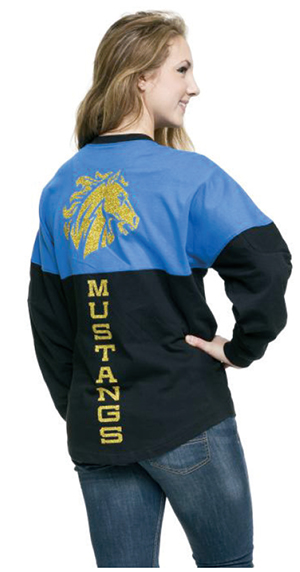
Spiritwear can be much more creative than a logo on the front of a
sweat shirt. This example was made with Stahls’ Glitter Flake.
When thinking about apparel and how it fits into an awards and personalization retailer's product line, T-shirts often are the first thing that come to mind—and for good reason. John Balzic, owner
of M&J Trophies and Apparel in Glendale, AZ, said while his shop offers a wide range of apparel, T-shirts account for the majority of their apparel business.
Many retailers offer complete apparel lines—everything from hats to polo shirts to sweatpants to gloves and mittens—so customers have plenty of options from which to choose.
"We do pretty much anything the customer asks for" when it comes to apparel, said Randy Crouse, president of BC Awards Inc. in Brownsburg, IN.
Customers also have plenty of options when it comes to designing their custom pieces exactly as they envision because of the many processes available. The traditional apparel decoration processes—screenprinting and embroidery—are increasingly being joined by sublimation, transfers, and direct-to-garment printing. In many shops, you can even go a step further, adding rhinestones, glitter, and other special add-ons to make a piece unique.
The sheer number of choices in the apparel market can translate into more sales, retailers say. Balzic said apparel has always been a part of M&J Trophies' business, but it's grown to be 65% of sales, up from 50% when they started 12 years ago. Every year, apparel has increased as a percentage of the business. He attributes the increase to customers spending more on apparel, particularly customers who also come to them for trophies.
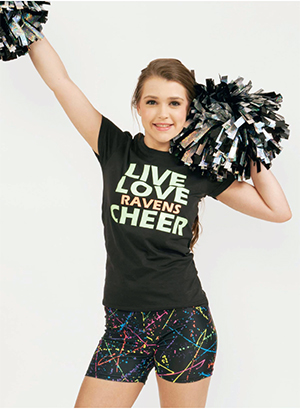
Uniforms aren’t the only apparel items that teams buy. This shirt
was personalized with neon colors using Stahls’ Glitter Flake.
Take for example a youth sports team: M&J Trophies will provide the athletes their entire uniforms and practice gear—jerseys, pants, shorts, and T-shirts—plus apparel for the team's coaches. Add to that spiritwear—T-shirts, hoodies, and more—for parents and fans. Balzic said being able to offer both apparel and awards helps the bottom line because these groups often spend more on apparel than awards each season.
Awards can boost apparel sales, but the converse is true as well, said Mike Montecalvo, CRM, president of Lamont Awards & Apparel in Spencerport, NY. Montecalvo said his shop originally used the awards business to drive apparel sales. As clothing sales grew, they found themselves using apparel to drive awards sales.
Awards still constitute most of their business, but apparel has grown to 25% of total sales. "Our customer base
(for apparel) is primarily formed from the groups and organizations that we provide awards to. Usually a sports team that uses awards and trophies wears a uniform, too," Montecalvo said.
OVERLAPPING CUSTOMERS
The customer base for apparel dovetails nicely with the awards clientele for M&J Trophies as well, Balzic said. By offering both, they can meet their customers' needs throughout the year, which helps keep business steady. "Dealing with the leagues and the schools, we get their business at the beginning of the season, as well as at the end," he said. "It's a perfect fit."
That has also been the case at BC Awards, Crouse said. At BC Awards, the client base for apparel is mostly corporate, as is their customer base for awards and other products. Apparel consistently accounts for about 35% of total sales at BC Awards.
Having a similar client base for awards and apparel means shops don't have to devote extra time or money to marketing their apparel.
"Our relationships have gotten us where we are," Balzic said. "We do not have to advertise or cold call in any way."
BC Awards relies on word-of-mouth advertising and is able to depend on that alone because they focus on customer service and meeting deadlines, Crouse said. In addition, being able to work with customers throughout the process to make sure they are satisfied with the final product helps keep them coming back. "We do anything the customer asks for," he said.
For M&J Trophies and Apparel, apparel customers run the gamut, from schools and youth sports groups to small businesses and charitable organizations. Balzic said the customer base is steady and predictable. "I can look at my sales at the beginning of the month and gauge who is coming back."

Combine processes and materials for apparel that makes a fashion
statement and will be in high demand. This shirt from Stahls’ combines full-color sublimation and glitter vinyl.
THE LOGISTICS
Retailers who sell apparel aren't necessarily personalizing all of the apparel they sell, which can create additional opportunities for other apparel retailers who are willing to take on outsourced work.
At Lamont Awards & Apparel, 95% of their sublimation work is done in-house, outsourcing just a small number of their orders. M&J Trophies screenprints and embroiders, doing all of their apparel personalizing in-house.
Crouse said BC Awards does all the design work for shirts and other apparel but contracts with printers
and embroiders to do the finishing work. Having good relationships with those contractors is important, Crouse said, because it allows for a quick turnaround on orders.
Having a dependable supplier or suppliers is also critical, whether you personalize all of the apparel for your customers or not. Crouse said he relies on three suppliers for most of BC Awards' apparel pieces and calls on a few others regularly.
Being loyal to suppliers can benefit retailers, Balzic said. He has a small group of suppliers he relies on, only going outside that group when he can't get an item he needs from them.
"I am big on loyalty," he said. "I feel I would rather be a big fish with few suppliers than a small fish with several. We get more pull that way if needed."
WORTH THE CHALLENGE
While apparel has been a boon to business for many retailers, it does not come without its challenges. Primary among them is that there is no margin for error. "You've got to get it right the first time, Crouse said. "Once it's there you can't fix it."
Balzic said another challenge is that apparel orders often come in small batches—two T-shirts here, four polo shirts there—which can be time-consuming as far as changing over the equipment between orders.
"When a customer orders two or three pieces, and we need to re-setup all the screens, we lose quite a bit," he said. But what is lost in downtime is worth it in the end. "It's about relationships, and we can't say no."
Montecalvo said it can be hard to convince customers that the cheaper option is not always the best choice and that buying sublimated pieces is worth the expense.
For many shops, though, the most obvious benefit—being the go-to for customers' many needs—makes apparel a worthwhile and important part of their offerings.
"By offering apparel," Balzic said, "we become a one-stop shop."
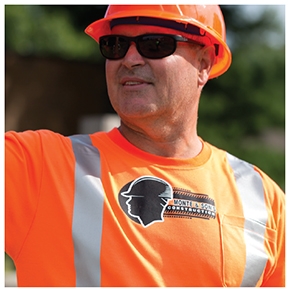
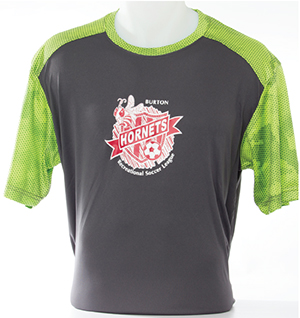
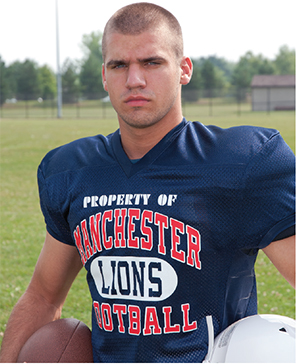
These shirts, decorated with heat-applied transfers and transfer materials from Transfer Express, showcase some of the markets for apparel, including businesses (left) and high school and recreational sports teams (middle and right). One process with different designs and different blank apparel can create wearables that appeal to a diverse customer base.
APPAREL TRENDS MATTER
Clothing is subject to changing trends and attitudes among customers, probably more so than awards. Although T-shirts are always popular, the type that's hot at any particular moment tends to change. Right now, fashion T-shirts are hot, John Balzic of M&J Trophies said. "People want more than just a basic T-shirt and are willing to pay more."
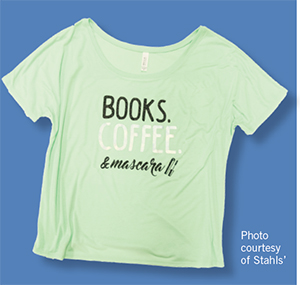
Randy Crouse has seen a similar interest in fashion T-shirts at BC Awards and has also said items using soft-blend materials have grown more popular.
Sublimation, too, is gaining popularity, said Mike Montecalvo, CRM, of Lamont Awards & Apparel said. "All of the professional sports teams are using sublimated apparel for their practice (gear) and uniforms," he said.
Read more apparel personalization articles